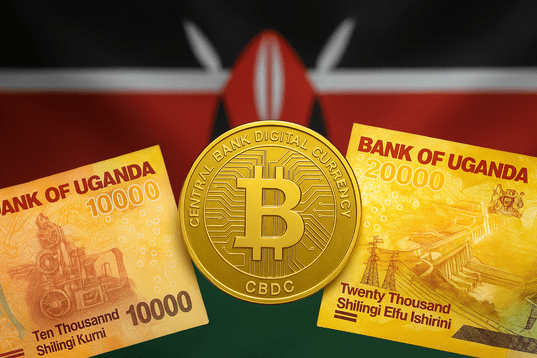Uganda CBDC pilot is live on a permissioned blockchain run by the Global Settlement Network (GSN).
The Uganda CBDC mirrors the Ugandan shilling and is backed by treasury bonds.
Stay ahead in the crypto world – follow us on X for the latest updates, insights, and trends!🚀
Meanwhile, Kenya crypto bill for virtual asset service providers (VASP) passed its third reading and now awaits President William Ruto’s signature.
Uganda CBDC Pilot, Treasury Bonds, and GSN Tokenization
The Uganda CBDC uses the Ugandan shilling as its reference unit. It is backed by Ugandan treasury bonds to anchor value. This structure places public debt at the core of settlement.
The pilot operates on GSN’s permissioned blockchain. A permissioned setup controls validator access and data flows. It simplifies audits and monitoring.
Smartphone access is part of the rollout. Users can reach the Uganda CBDC through mobile devices. This matches Uganda’s mobile-first usage pattern.
Compliance sits at the center. The pilot follows KYC and AML standards. It aligns with local rules and international norms.
The broader plan focuses on $5.5 billion tokenization with Diacente Group. GSN and Diacente Group target real-world assets across Uganda. They aim to digitize key financial flows.
Sectors include agro-processing hubs, mining operations, and solar plants. Tokenized rails can track receivables and payouts. They also improve reconciliation.
Edgar Agaba, Diacente Group chair, described the goal.
“By integrating tokenization and CBDCs into Uganda’s development roadmap, we’re creating transparent, tech-driven ecosystems that attract new capital, empower local industries, and scale sustainable growth from the ground up,” he said.
Kenya Crypto Bill, VASP Licensing, and Oversight Split
The Kenya crypto bill advanced after a third reading in parliament. It now goes to President William Ruto. If signed, it becomes law.
The text establishes VASP licensing and consumer protections. Covered entities include exchanges, brokers, wallet operators, and token issuers. This offers clear categories for market roles.
Oversight splits across two bodies. The Central Bank of Kenya will handle payments and custody. The Capital Markets Authority will oversee investment and trading.
The Kenya crypto bill embeds KYC and AML provisions. It references Financial Action Task Force standards. It also addresses deceptive advertising, with fines and penalties.
The bill was first introduced in January. It then moved through committee and readings. The process now awaits the final signature.
Meanwhile, Kenya VASP rules link to regional adoption. Clear responsibilities reduce friction for operators. They also define disclosure and custody expectations.
Africa Crypto Adoption: Chainalysis, ODI, and Statista Data
Sub-Saharan Africa ranks among the fastest adopters. Chainalysis reported $205 billion in onchain value from July 2024 to June 2025. This spans both retail and institutional flows.
Nigeria launched a CBDC in 2021, according to the Overseas Development Institute (ODI). Ghana and South Africa ran CBDC pilots. Egypt set a 2030 launch date, while Rwanda and Kenya remain in research and consultation.
Statista projects 75 million African crypto users by 2026. It pegs the user rate at 5.90% and revenue near $5.1 billion. These figures set expectations for market size.
Stablecoins play a major role. Chainalysis said they account for 43% of Sub-Saharan transaction volume as of Oct. 2. The top five are Nigeria, South Africa, Ghana, Kenya, and Zambia. Uganda ranked seventh.
These datasets frame the Uganda CBDC pilot and Kenya crypto bill. They also show how policy and usage move together. Payment, remittance, and savings patterns differ by country.
Disclosure:This article does not contain investment advice or recommendations. Every investment and trading move involves risk, and readers should conduct their own research when making a decision.
Kriptoworld.com accepts no liability for any errors in the articles or for any financial loss resulting from incorrect information.

Tatevik Avetisyan is an editor at Kriptoworld who covers emerging crypto trends, blockchain innovation, and altcoin developments. She is passionate about breaking down complex stories for a global audience and making digital finance more accessible.
📅 Published: October 9, 2025 • 🕓 Last updated: October 9, 2025


